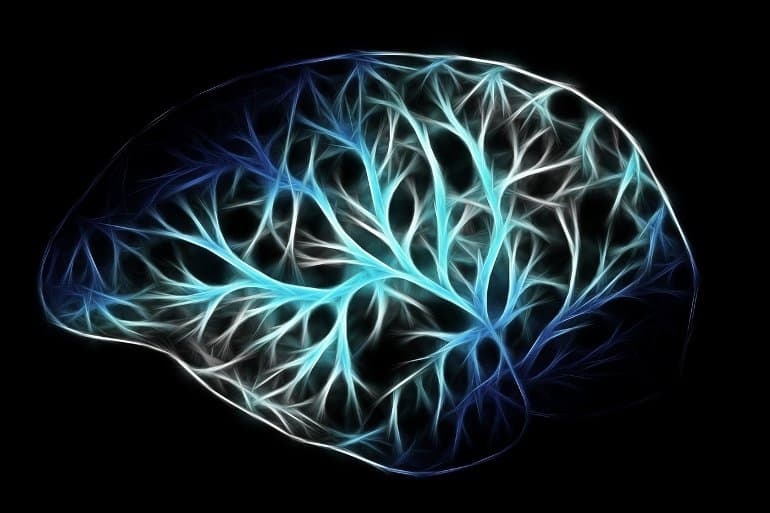Summary: The dSlo2 channel appears to play a role in suppressing hyperactivity in the brain that causes epileptic seizures.
Source: Colorado State University
Epilepsy, a chronic brain disorder that causes seizures, affects around 50 million people worldwide.
New research from the lab of Department of Biomedical Sciences Professor Susan Tsunoda that was recently featured in the Journal of Neuroscience showed for the first time that a channel in the brain called dSlo2 suppresses epileptic seizures.
Epilepsy, caused by excessive activity in certain brain cells, is characterized by episodes of involuntary movement that can sometimes lead to loss of consciousness. Epileptic seizures vary in frequency and can range from brief muscle spasms to lengthy convulsions. People with epilepsy may be physically injured while having seizures, tend to experience higher rates of anxiety and depression, and face an increased risk of premature death.
Put to the test for the first time
For decades it has been thought that the dSlo2 channel might play a role in reducing the hyperactivity that causes seizures, but it had not been tested until now. Using a fly model (Drosophila) and CRISPR technology, Tsunoda’s lab discovered that the dSlo2 channel actually does play a preventative and protective role during seizures.

In epilepsy and other seizure conditions, neurons in the brain become overexcited resulting in high levels of sodium ions. The research, led by recent biomedical sciences Ph.D. graduate Nathan Byers, found that the dSlo2 channel, which is activated by excessive levels of sodium ions, quiets this hyperactivity during seizures by releasing potassium ions from neurons. And when the channel is missing, seizures worsen and become more frequent.
“Whenever there’s too much sodium coming in, these channels are present and get activated immediately,” Tsunoda said. “Now that we know this, next we are going to look more closely at the regulatory sites of the channel to see which ones are most important for seizure suppression.”
Genetic mutations that alter this key channel have been associated with different types of epilepsy and could be contributing to the severity of symptoms experienced by those with epilepsy. Better understanding how it works is crucial to informing future research and the development of therapies that could help improve quality of life for people suffering from certain types of epilepsy and other neurological disorders.
About this epilepsy research news
Author: Press Office
Source: Colorado State University
Contact: Press Office – Colorado State University
Image: The image is in the public domain
Original Research: Closed access.
“Slo2/KNa Channels in Drosophila Protect against Spontaneous and Induced Seizure-like Behavior Associated with an Increased Persistent Na+ Current” by Nathan Byers et al. Journal of Neuroscience
Abstract
Slo2/KNa Channels in Drosophila Protect against Spontaneous and Induced Seizure-like Behavior Associated with an Increased Persistent Na+ Current
Na+ sensitivity is a unique feature of Na+-activated K+ (KNa) channels, making them naturally suited to counter a sudden influx in Na+ ions. As such, it has long been suggested that KNa channels may serve a protective function against excessive excitation associated with neuronal injury and disease. This hypothesis, however, has remained largely untested.
Here, we examine KNa channels encoded by the Drosophila Slo2 (dSlo2) gene in males and females.
We show that dSlo2/KNa channels are selectively expressed in cholinergic neurons in the adult brain, as well as in glutamatergic motor neurons, where dampening excitation may function to inhibit global hyperactivity and seizure-like behavior. Indeed, we show that effects of feeding Drosophila a cholinergic agonist are exacerbated by the loss of dSlo2/KNa channels. Similar to mammalian Slo2/KNa channels, we show that dSlo2/KNa channels encode a TTX-sensitive K+ conductance, indicating that dSlo2/KNa channels can be activated by Na+ carried by voltage-dependent Na+ channels. We then tested the role of dSlo2/KNa channels in established genetic seizure models in which the voltage-dependent persistent Na+ current (INap) is elevated. We show that the absence of dSlo2/KNa channels increased susceptibility to mechanically induced seizure-like behavior. Similar results were observed in WT flies treated with veratridine, an enhancer of INap.
Finally, we show that loss of dSlo2/KNa channels in both genetic and pharmacologically primed seizure models resulted in the appearance of spontaneous seizures.
Together, our results support a model in which dSlo2/KNa channels, activated by neuronal overexcitation, contribute to a protective threshold to suppress the induction of seizure-like activity.
SIGNIFICANCE STATEMENT
Slo2/KNa channels are unique in that they constitute a repolarizing K+ pore that is activated by the depolarizing Na+ ion, making them naturally suited to function as a protective “brake” against overexcitation and Na+ overload.
Here, we test this hypothesis in vivo by examining how a null mutation of the Drosophila Slo2 (dSlo2)/KNa gene affects seizure-like behavior in genetic and pharmacological models of epilepsy.
We show that indeed the loss of dSlo2/KNa channels results in increased incidence and severity of induced seizure behavior, as well as the appearance of spontaneous seizure activity.
Our results advance our understanding of neuronal excitability and protective mechanisms that preserve normal physiology and the suppression of seizure susceptibility.






